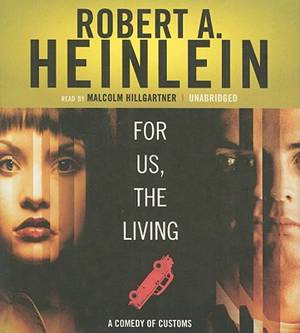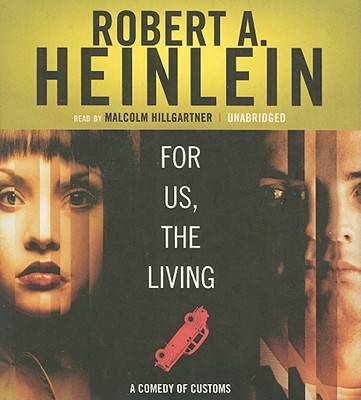
- Afhalen na 1 uur in een winkel met voorraad
- Gratis thuislevering in België vanaf € 30
- Ruim aanbod met 7 miljoen producten
- Afhalen na 1 uur in een winkel met voorraad
- Gratis thuislevering in België vanaf € 30
- Ruim aanbod met 7 miljoen producten
Zoeken
€ 43,45
+ 86 punten
Uitvoering
Omschrijving
From Grand Master Robert A. Heinlein comes a long-lost first novel, written in 1939, introducing ideas and themes that would shape his career and define the genre that is synonymous with his name. July 12, 1939: Perry Nelson is driving along the palisades when another vehicle swerves into his lane, a tire blows out, and his car careens off the road and over a bluff. The last thing he sees before his head connects with the boulders below is a girl in a green bathing suit, prancing along the shore. When he wakes, the girl in green is a woman dressed in furs, and the sun-drenched shore has been replaced by snowcapped mountains. The woman, Diana, rescues Perry from the bitter cold and takes him to her home to rest and recuperate. Later they debate the cause of the accident, for Diana is unfamiliar with the concept of a tire blowout and Perry cannot comprehend snowfall in mid-July. Then Diana shares with him a vital piece of information: the date is now January 7, the year 2086. When his shock subsides, Perry begins an exhaustive study of global evolution over the past 150 years. He learns, among other things, that a United Europe was formed; the military draft was completely reconceived; banks became publicly owned and operated; and in the year 2003, two helicopters destroyed Manhattan in a galvanizing act of war. But education brings with it inescapable truths--the economic and legal systems, the government, and even the dynamic between men and women remain alien to Perry, the customs of the new day continually testing his mental and emotional resolve. Yet it is precisely his knowledge of a bygone era that will serve Perry best, as the man from 1939 seems destined to lead his newfound peers even further into the future than they could have imagined. A classic example of the future history that Robert Heinlein popularized during his career, For Us, the Living marks both the beginning and the end of an extraordinary arc comprising the political, social, and literary crusading that is his legacy.
Specificaties
Betrokkenen
- Auteur(s):
- Uitgeverij:
Inhoud
- Aantal bladzijden:
- 6
- Taal:
- Engels
Eigenschappen
- Productcode (EAN):
- 9781441743398
- Verschijningsdatum:
- 1/02/2011
- Uitvoering:
- CD
- Formaat:
- CD standaard audioformaat
- Afmetingen:
- 132 mm x 145 mm
- Gewicht:
- 158 g

Alleen bij Standaard Boekhandel
+ 86 punten op je klantenkaart van Standaard Boekhandel
Beoordelingen
We publiceren alleen reviews die voldoen aan de voorwaarden voor reviews. Bekijk onze voorwaarden voor reviews.








